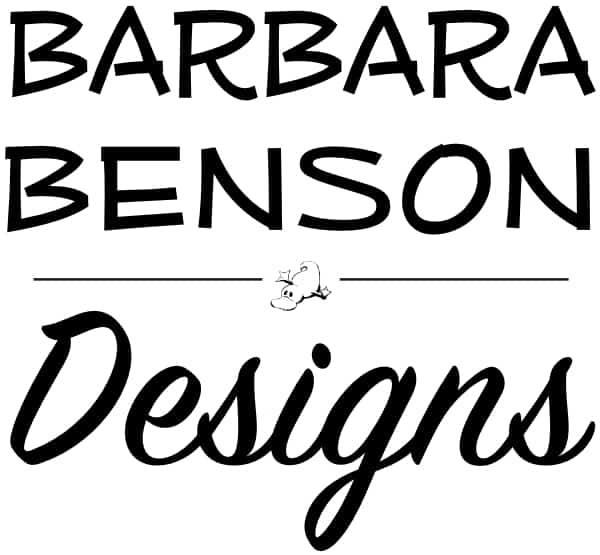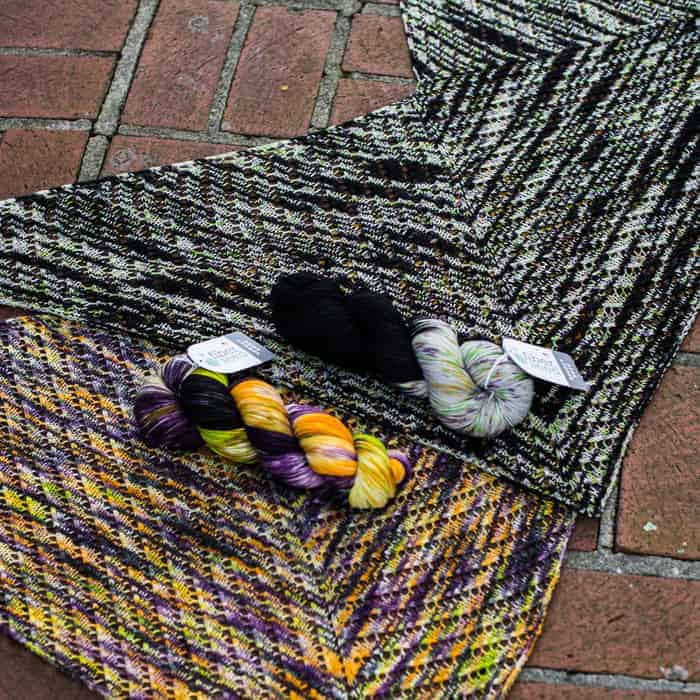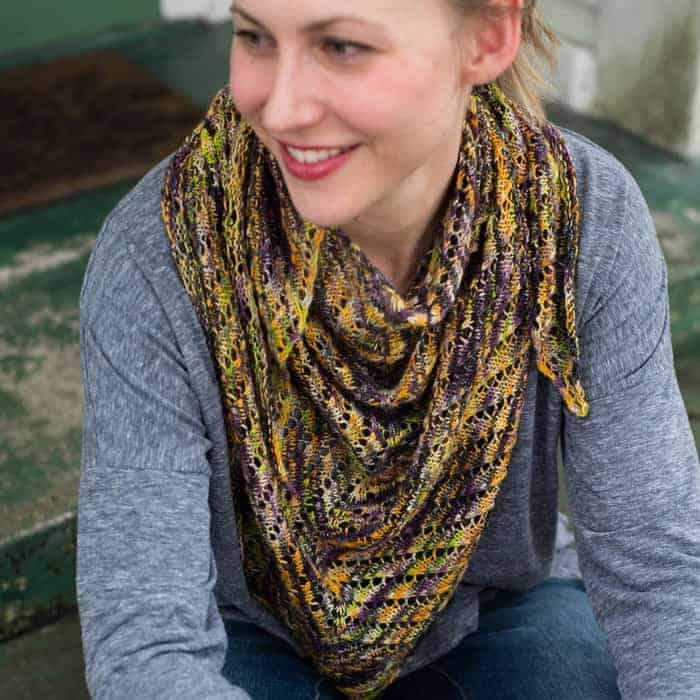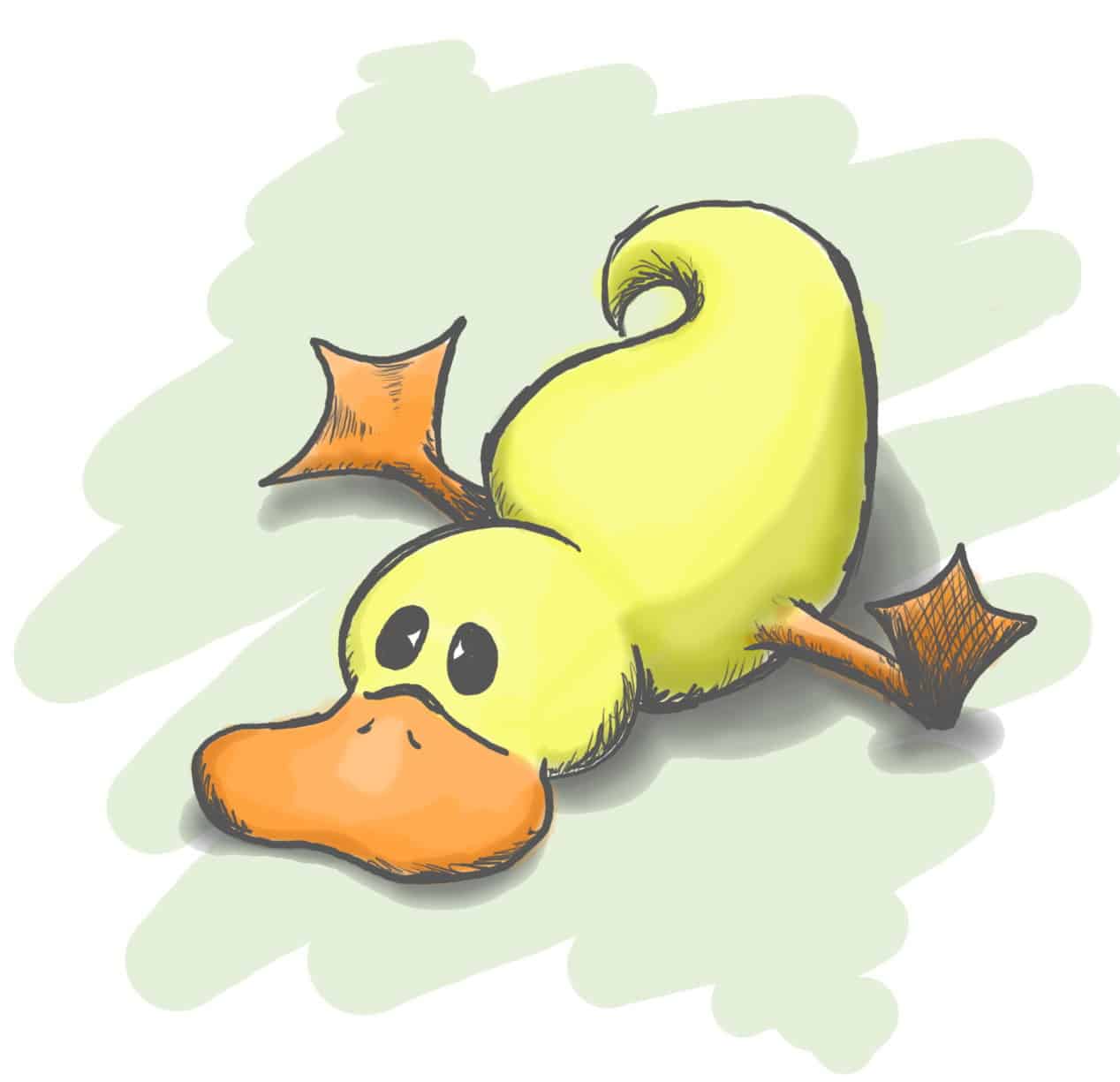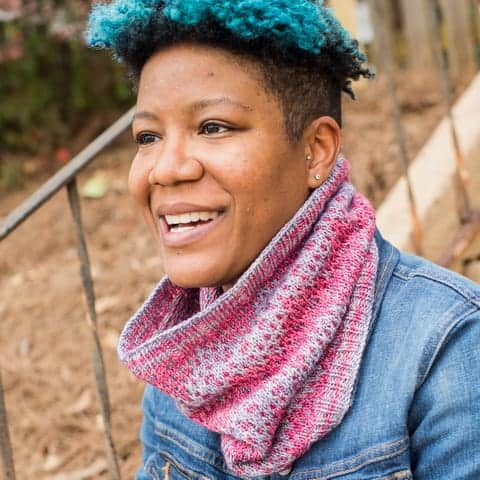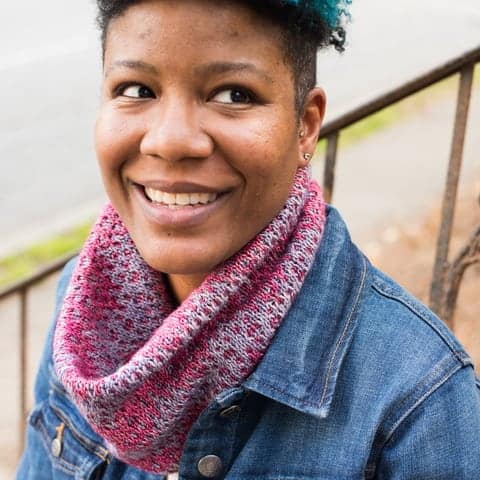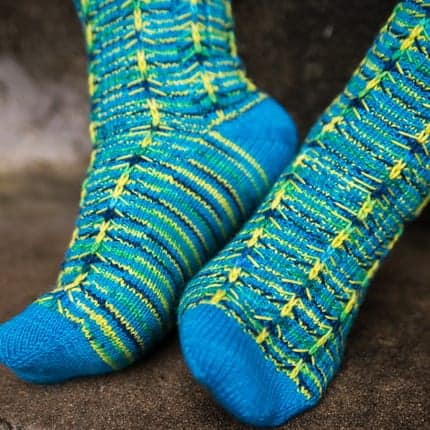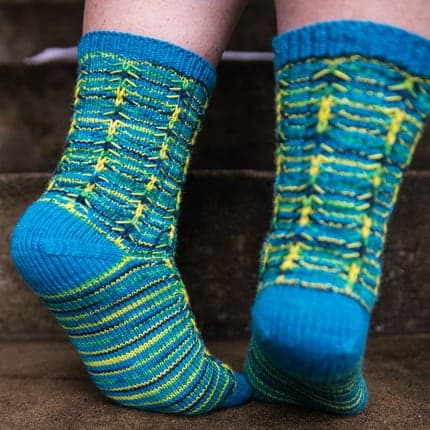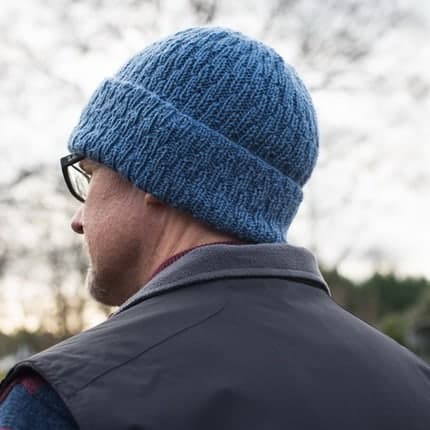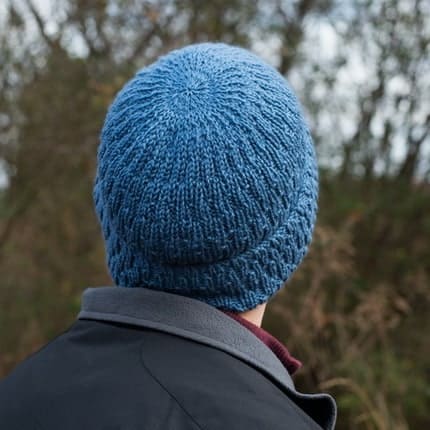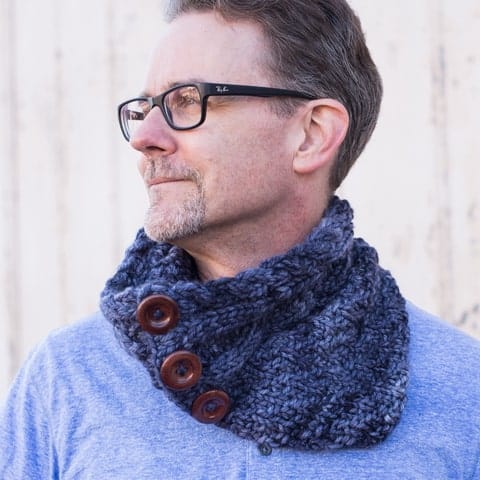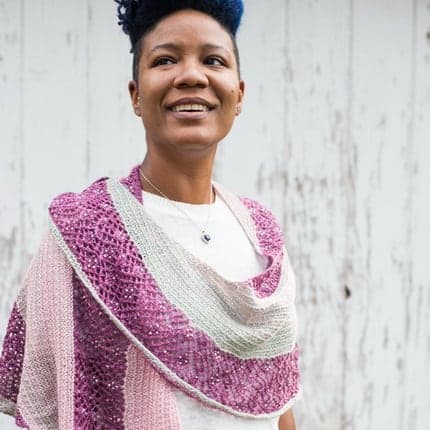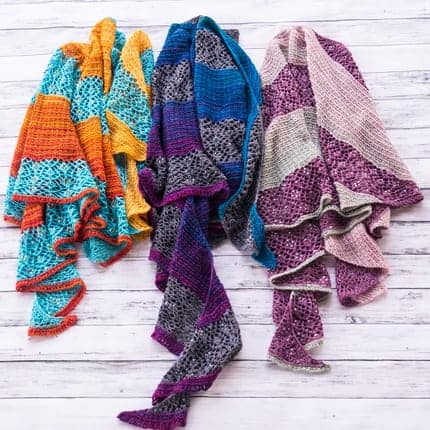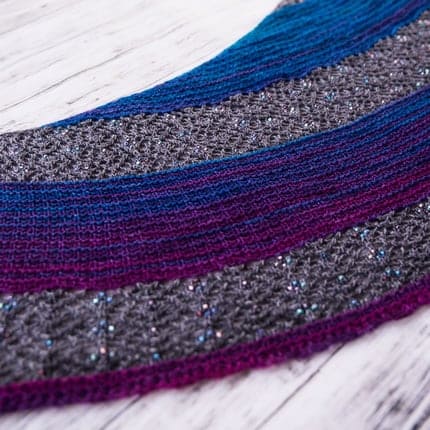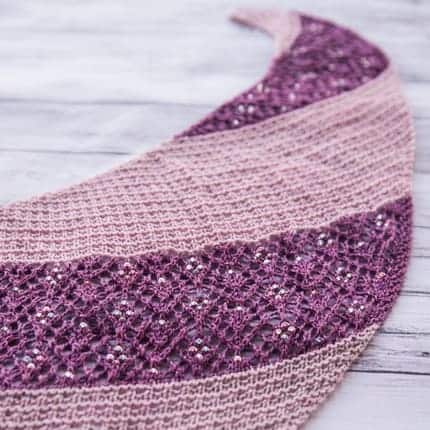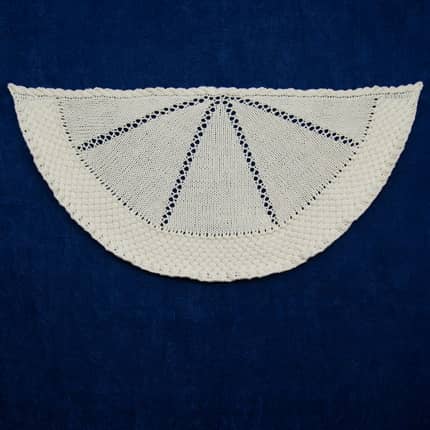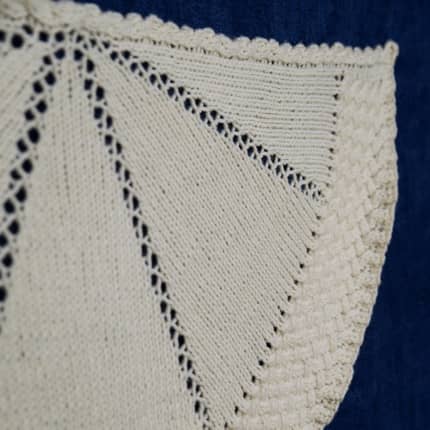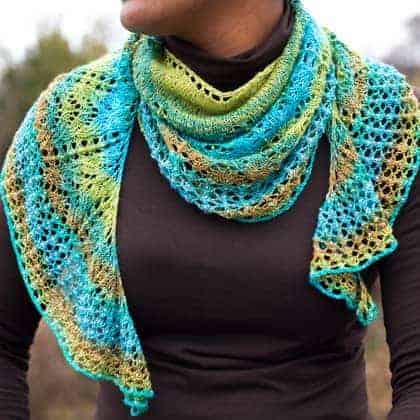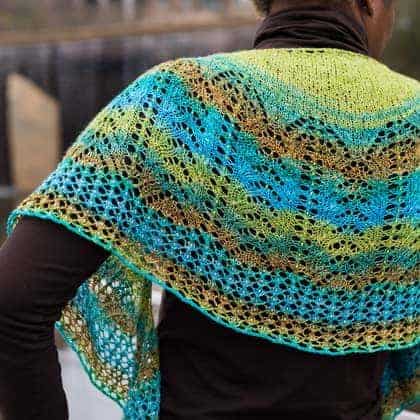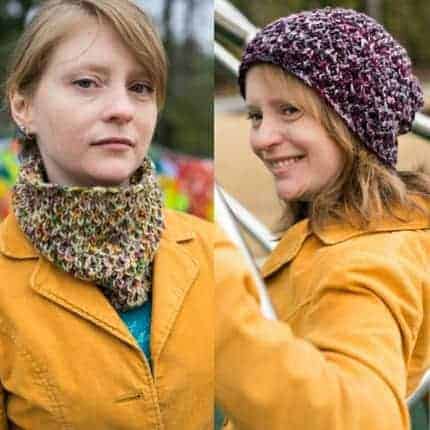I love working with indie dyers because they inspire me towards more creativity. So, when The Fiber Seed approached me with their Swifties program, I jumped at the chance to work with them. Swifties are patterns that are mostly single skein patterns that are designed to be fun and fast to knit up. I started swatching to see what I could come up with and struck upon something that grabbed my attention as I hope it grabs yours.
It started as a top down triangle, but I decided to do something a little unorthodox. Instead of mirroring the lace pattern at the spine I decided to see what it looked like if I simply worked the same shaping on both sides of the spine, and it turned out to be magic! The straight rows of lace look like they are going every which way when in fact they are running in the same direction within the panel — it’s just that the panels are oriented differently. This led me to want to also make a three-panel version, which yielded a 3/4 square shawl. I kept the lace simple and geometric because I wanted this lace shawl to be able to handle crazy variegation to highlight one of The Fiber Seed’s beautifully multicolor yarns.
Realizing that I had two shawls to knit gave me the opportunity to do something I have always wanted to do. The Fiber Seed does this really cool and unique thing in that they dye the same colorways using different techniques. What that means is that the colorway has a set combination of colors but the dye genius there combines them in different ways. For the two-panel, top-down triangle version I worked with the color Which Witch Kaleidoscope and for the the three-panel, 3/4 square version I used Which Witch Half Speckled. You can see that they came out very differently, but I think both are beautiful. Of course the shawl will work in any of their solids, semisolids, speckled, dipped or besprinkled colorways and I cannot wait to see how they all look!

